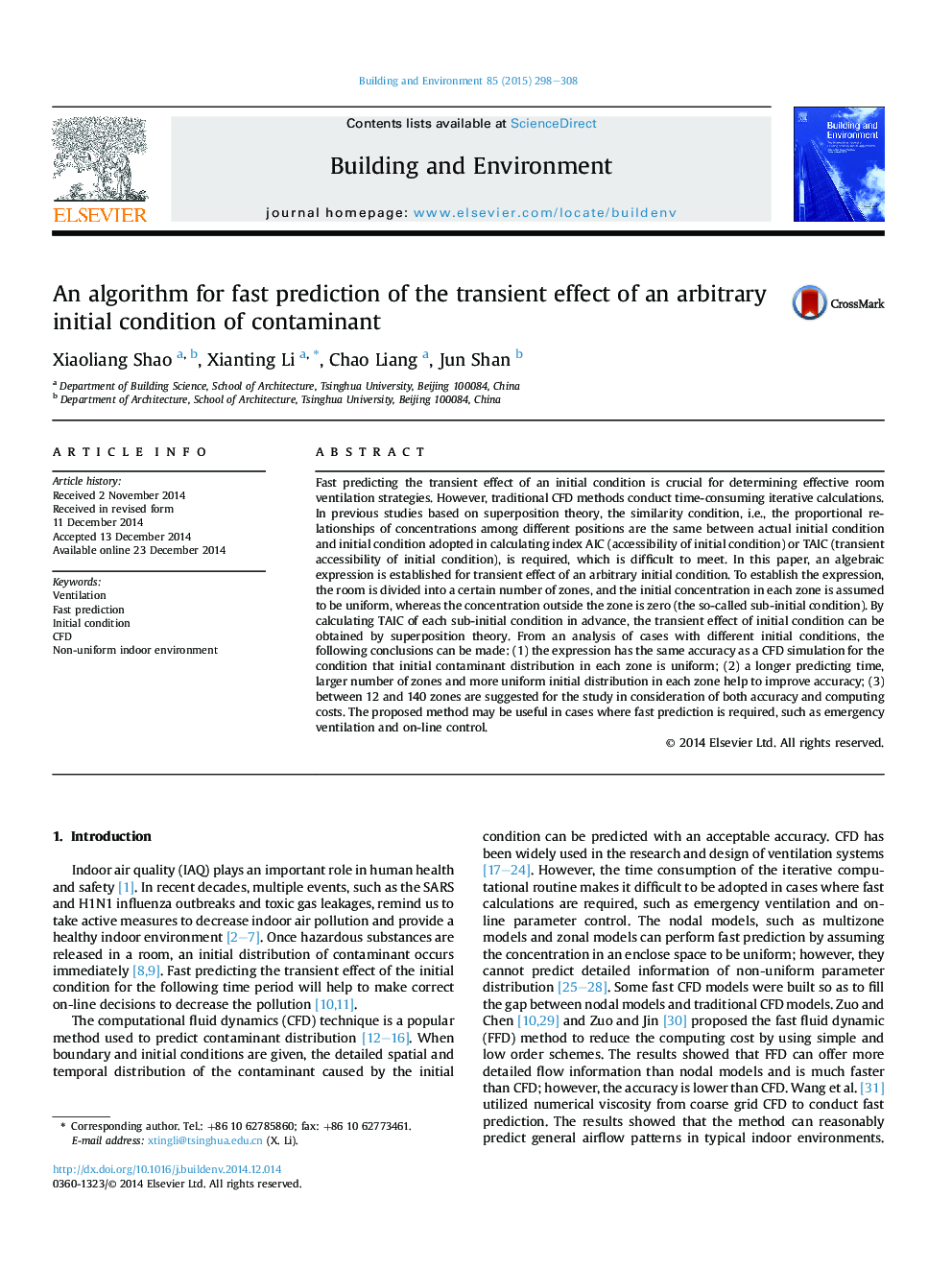| کد مقاله | کد نشریه | سال انتشار | مقاله انگلیسی | نسخه تمام متن |
|---|---|---|---|---|
| 247967 | 502537 | 2015 | 11 صفحه PDF | دانلود رایگان |
• An expression is established for transient effect of an arbitrary initial condition.
• The expression can predict transient concentration almost without time consumption.
• The expression is derived theoretically and verified numerically.
• The effects of predicting time, number of zones and initial distribution are analyzed.
• The expression may be useful in emergency ventilation and on-line control.
Fast predicting the transient effect of an initial condition is crucial for determining effective room ventilation strategies. However, traditional CFD methods conduct time-consuming iterative calculations. In previous studies based on superposition theory, the similarity condition, i.e., the proportional relationships of concentrations among different positions are the same between actual initial condition and initial condition adopted in calculating index AIC (accessibility of initial condition) or TAIC (transient accessibility of initial condition), is required, which is difficult to meet. In this paper, an algebraic expression is established for transient effect of an arbitrary initial condition. To establish the expression, the room is divided into a certain number of zones, and the initial concentration in each zone is assumed to be uniform, whereas the concentration outside the zone is zero (the so-called sub-initial condition). By calculating TAIC of each sub-initial condition in advance, the transient effect of initial condition can be obtained by superposition theory. From an analysis of cases with different initial conditions, the following conclusions can be made: (1) the expression has the same accuracy as a CFD simulation for the condition that initial contaminant distribution in each zone is uniform; (2) a longer predicting time, larger number of zones and more uniform initial distribution in each zone help to improve accuracy; (3) between 12 and 140 zones are suggested for the study in consideration of both accuracy and computing costs. The proposed method may be useful in cases where fast prediction is required, such as emergency ventilation and on-line control.
Journal: Building and Environment - Volume 85, February 2015, Pages 298–308
